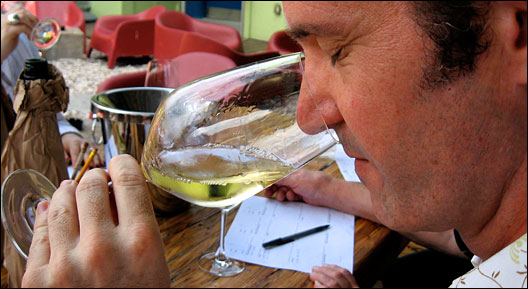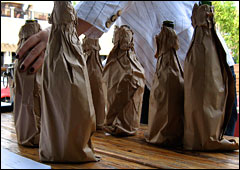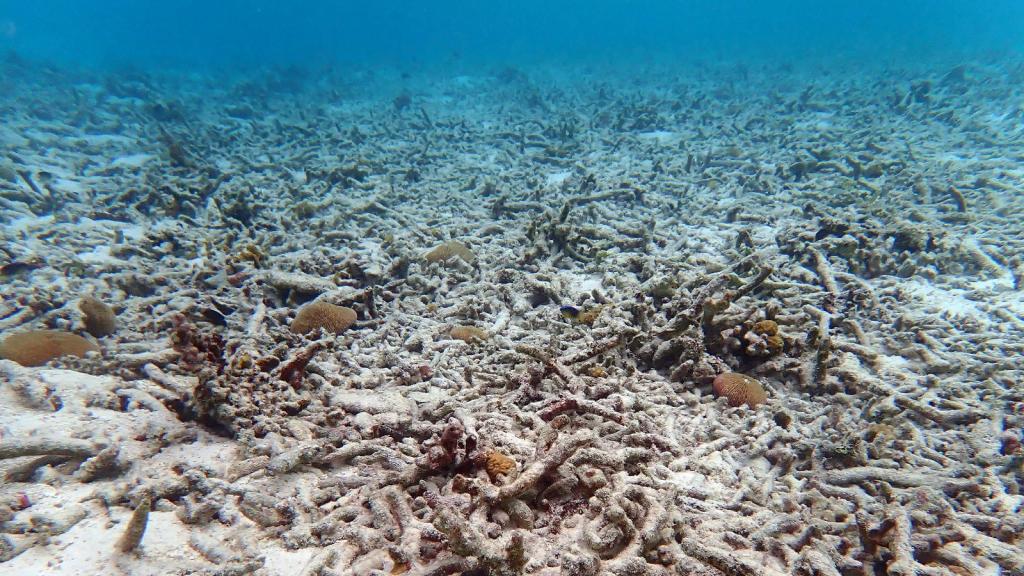
When the summer sun rages, there are few antidotes more pleasing than a light dinner and a glass of chilled white wine.
Of course, as summers get hotter, it gets more difficult to enjoy that indulgence without thinking about climate change and other ecological degradation. And that leads to a natural question: Where did the wine originate? On some vast agribusiness-like estate that relies on chemicals, or on a human-scale farm that respects the surrounding ecosystem?
To identify the latter wines, many consumers look for the organic label — ably described by Roz Cummins in a recent Tis the Season. But I wanted to shake things up a little by looking for wines made by vintners who generally reject labeling but avoid agrichemicals as a matter of course. These mavericks, loosely gathered under the banner of “natural wine,” buck what they see as a pernicious trend in global winemaking: the use of industrial techniques, not only in the vineyard but also in the wine-making process, that strip wines of their distinctiveness. They charge that a once-delightfully varied wine world has become homogenized; that terroir — the French word for the hint of place that should come through in every sip — has been squeezed out of wine to flatter an emerging “global palate.”
Grist’s Pick
Nigl 2006 Gruner Veltliner Kremser Freiheit
$19
Their manifesto is the film Mondovino (2005), a biting, brilliant documentary about how prestigious vintners in California and France routinely manipulate their wines to boost their appeal. And Alice Feiring, whose new book I recently reviewed, has been a leading U.S. booster of natural wine, which she champions on her blog In Vino Veritas.
For consumers interested in sampling natural wines, the problem is identifying them. Since most natural winemakers reject organic certification — they feel like they’re making their wine the way it should be made, and don’t need bureaucratic affirmation — their products can get lost on the wine-shop shelf. In a sense, their bullheadedness forces consumers to dig deeper — to learn more about wine, how it’s made, its regional differences, and which producers buck modern wine-making trends. Feiring’s book and blog offer excellent primers, as does the blog Fork & Bottle.
But no matter how much research you do, finding natural wines will always be a trick, because they tend to be made in small batches and imported by small, region-based distributors. That means availability varies largely based on where you are. For that reason, it’s important to find a reputable wine shop in your area and hit them up for advice. I was in Austin when preparing this article, so I consulted with Lee Ann Kocurek of the Austin Wine Merchant, who chose six “natural” whites over a range of prices; then a group of nine friends and I, including Lee Ann, tasted them one blistering hot June afternoon at the Key Bar in downtown Austin. Lee Ann placed the bottles in paper bags so we couldn’t see the labels and poured out tastes. I asked everyone to scribble notes about color, aroma (nose), and taste, and then to rank the options.
Here’s what we found.
LaFon 2006 Macon-Villages Les Heritiers du Comte
Origin: France
Price: $25
Ranking among six: 6th

No diggity, you got to bag it up.
Photo: Tyler Bell
“Pretty pale gold” is how one person described the look of this one. Beyond that, people weren’t wowed. “Couldn’t really pick up anything beyond alcohol,” wrote one of the nose. On the palate, I found it bone-dry and acidic — and little else. Another caught a floral, tropical fruit nose, but found it “dull, wanting to be something.” Lee Ann’s expert palate found a little more going on: “bright acidity, tomato water, underripe melon.” She ranked it fourth of six — its highest score.
Chapoutier Belleruche 2006 Cotes du Rhone Blanc
Origin: France
Price: $12
Ranking among six: 5th
This one showed a light straw color: “pale gold” was a popular descriptor. Like most of the panel, I found it very drinkable but not spectacular: some peach and stone fruit on the nose, and a bright, simple acidity on the palate. Its biggest detractor found it too acidic, while its top supporter deemed it “easy-drinking summer porch wine.” Lee Ann, the only one of us not tasting blind, detected some stone-fruit and melon notes, but found it pushed out of balance by alcohol notes.
Hedges 2006 Chardonnay Marsanne Sauvignon Blanc
Origin: Washington State
Price: $12
Ranking among six: 4th
This one took the best-value prize, elbowing out two more-expensive bottles to place fourth. I found it ultra-pale, almost the color of weak green tea. Lots of folks found melon notes on the nose; others found grass and tree flowers. On the palate, just a touch of sweetness balanced a bracing dash of acidity. One supporter declared it “über-smooth, easy drinkin’, bright and lively.” No one actively disliked it. Lee Ann caught gooseberry and lilies on the nose, and bright acid, green-apple flavors on the palate.
Leflaive 2006 Macon-Verze
Origin: France
Price: $37
Ranking among six: 3rd
This one, which also showed ultra-light and almost water-like in the glass, was delicious. I found that it smelled and tasted of pineapples, an initial burst of sweetness tempered by a long, dry finish. Others found butterscotch, honey, vanilla, and oak. “Lots of character,” one taster declared. Lee Ann tasted corn, jackfruit, and even a bit of “briny sea” on the nose, with a rich, velvety mouthfeel.
Weinbach Riesling Cuvee Theo 2006
Origin: France (Alsace)
Price: $34
Ranking among six: 2nd
This one had more color to it than the rest — a kind of faint yellow. I loved it and ranked it number one. I found lush candy and honeysuckle on the nose, and a beautiful balance of honey, butter, and light caramel, all leading to a zippy finish. Another taster detected “soil and a bit of herbs” on the nose, and declared the flavor “gorgeous.” The least enthusiastic admirer among us found it “overly sharp.” Lee Ann declared it “young,” with bright acid and an “oily texture.”
Nigl 2006 Gruner Veltliner Kremser Freiheit
Origin: Austria
Price: $19
Ranking among six: 1st
This one, yet another “ultra-pale” white, appealed to everyone. People picked up tropical, grass, lemon zest, champagne, and “wet stone” on the nose. On the palate, it delighted the crowd by being slightly bubbly. It had a bright, long acidity leading to a “great finish.” It propelled Lee Ann into overdrive: She found wet earth, mineral, honeydew, and “some briny sea.”
The bottom line: Austria makes exciting white wines — bright, acidic, long-flavored wines often balanced with exotic fruit flavors. So it’s not surprising that they took top honors here. But all of the wines appealed to at least one taster — and the lowest-scoring one got a pretty good ranking from the one pro among us. Both of the $12 wines I plan to drink again; and at $19, the winning Gruner Veltliner offers delicious drinking for a relatively modest price.

